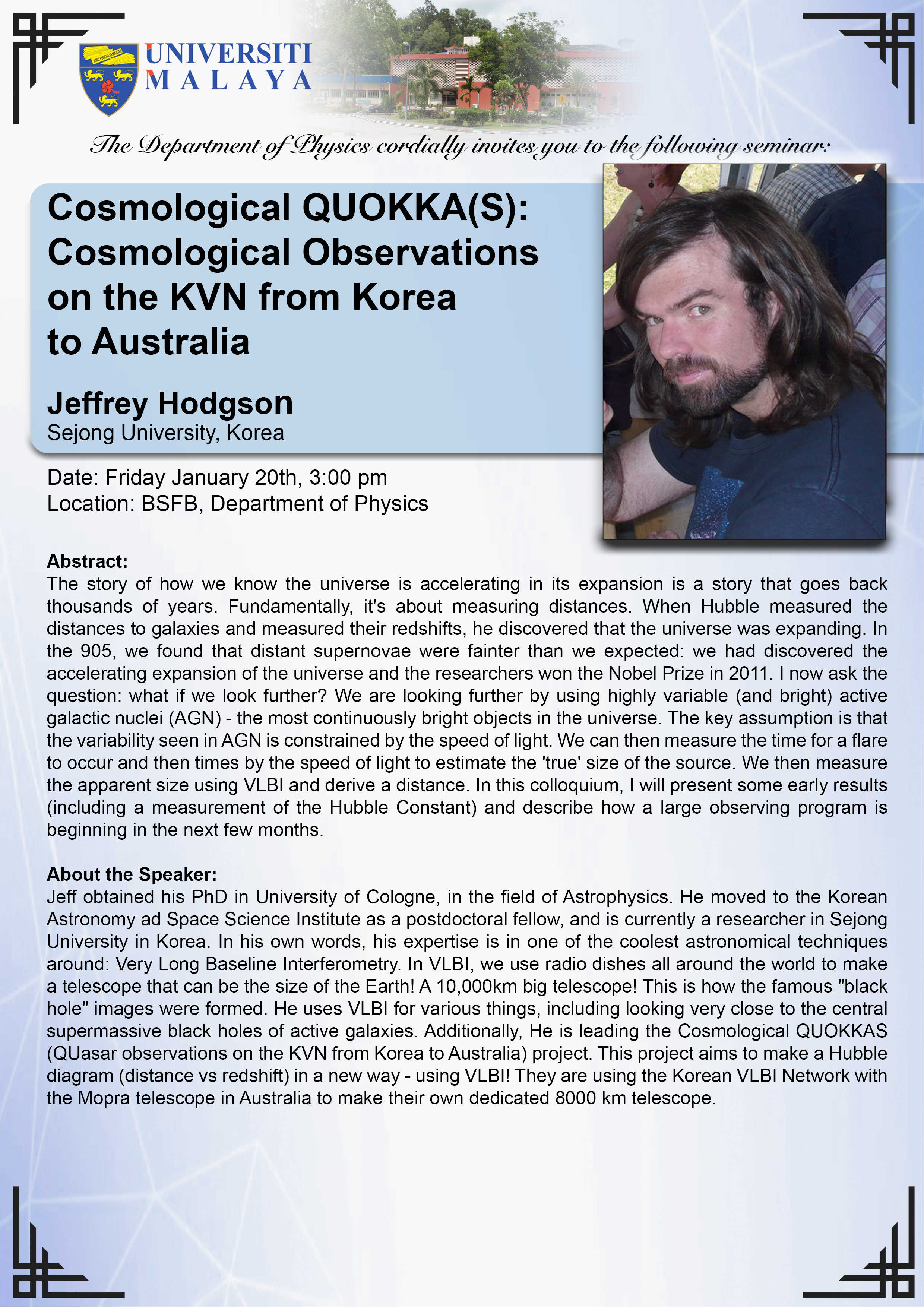Dear all,
The Department of Physics, faculty of Science invites you to the following Colloquium:

Title: Cosmological QUOKKA(S): Cosmological Observations on the KVN from Korea to Australia
Speaker: Jeffrey Hodgson, Sejong University, Korea
Date: Friday January 20th 2023, 3:00 pm
Location: BSFB, Department of Physics
Abstract: The story of how we know the universe is accelerating in its expansion is a story that goes back thousands of years. Fundamentally, it's about measuring distances. When Hubble measured the distances to galaxies and measured their redshifts, he discovered that the universe was expanding. In the 905, we found that distant supernovae were fainter than we expected: we had discovered the accelerating expansion of the universe and the researchers won the Nobel Prize in 2011. I now ask the question: what if we look further? We are looking further by using highly variable (and bright) active galactic nuclei (AGN) - the most continuously bright objects in the universe. The key assumption is that the variability seen in AGN is constrained by the speed of light. We can then measure the time for a flare to occur and then times by the speed of light to estimate the 'true' size of the source. We then measure the apparent size using VLBI and derive a distance. In this colloquium, I will present some early results (including a measurement of the Hubble Constant) and describe how a large observing program is beginning in the next few months.
About the Speaker: Jeff obtained his PhD in University of Cologne, in the field of Astrophysics. He moved to the Korean Astronomy ad Space Science Institute as a postdoctoral fellow, and is currently a researcher in Sejong University in Korea. In his own words, his expertise is in one of the coolest astronomical techniques around: Very Long Baseline Interferometry. In VLBI, we use radio dishes all around the world to make a telescope that can be the size of the Earth! A 10,000km big telescope! This is how the famous "black hole" images were formed. He uses VLBI for various things, including looking very close to the central supermassive black holes of active galaxies. Additionally, He is leading the Cosmological QUOKKAS (QUasar observations on the KVN from Korea to Australia) project. This project aims to make a Hubble diagram (distance vs redshift) in a new way - using VLBI! They are using the Korean VLBI Network with the Mopra telescope in Australia to make their own dedicated 8000 km telescope.